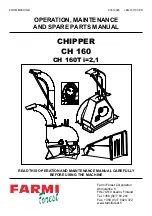
11
• Special angle comb is available.
• At the beginning, cut only a small amount of hair until you
become accustomed to the length each attachment comb
leaves the hair.
• It is suggested to try the longest attachment comb on the
clipper first, then use the shorter one if the desired length is
shorter.
• For uniform cutting, never push or force the clipper through
the hair at a fast rate. The clipper works most efficiently when
it works at its own speed.
• Start by combing the hair in its natural direction,
• Place the largest, attachment comb onto your clipper and start
by trimming the sides from the bottom upwards.
• Hold the clipper lightly against the hair with teeth of the
attachment comb pointing up but flat against the head.
• Slowly lift the clipper up and outward through the hair,
cutting only a small amount at a time (Fig. 1).
• Repeat around sides and back of head (Fig. 2).
• If you desire shorter hair, either change to a lower number
attachment comb or apply more pressure and less lift away
from head with the present attachment comb.
• This entire procedure requires practice, and it is always better
to leave too much hair the first few haircuts (Fig. 3).
• For the top of the head, you will give a fairly short cut if
you use the #4 attachment comb. With the teeth flat against
the head, slowly start trimming from the front to the back.
Again, it is better to leave the hair longer the first few haircuts
(Fig. 4).
OUTLINING
• Outlining requires no attachment. Take the clipper and push
the lever up to the close-cut position.
• Comb hair into the style. Position clipper between the side
burns and the ear (Fig. 5).
• Make sure the comer edge of the blade is against the hairline.
With the outline of the hair as your guide, slowly move the
clipper over, around, and behind the ears (Fig.6).
• For the back of the neck and the sideburns, hold the clipper
upside down, (see sketch), and holding it against the skin at
the length desired, move downwards.
































